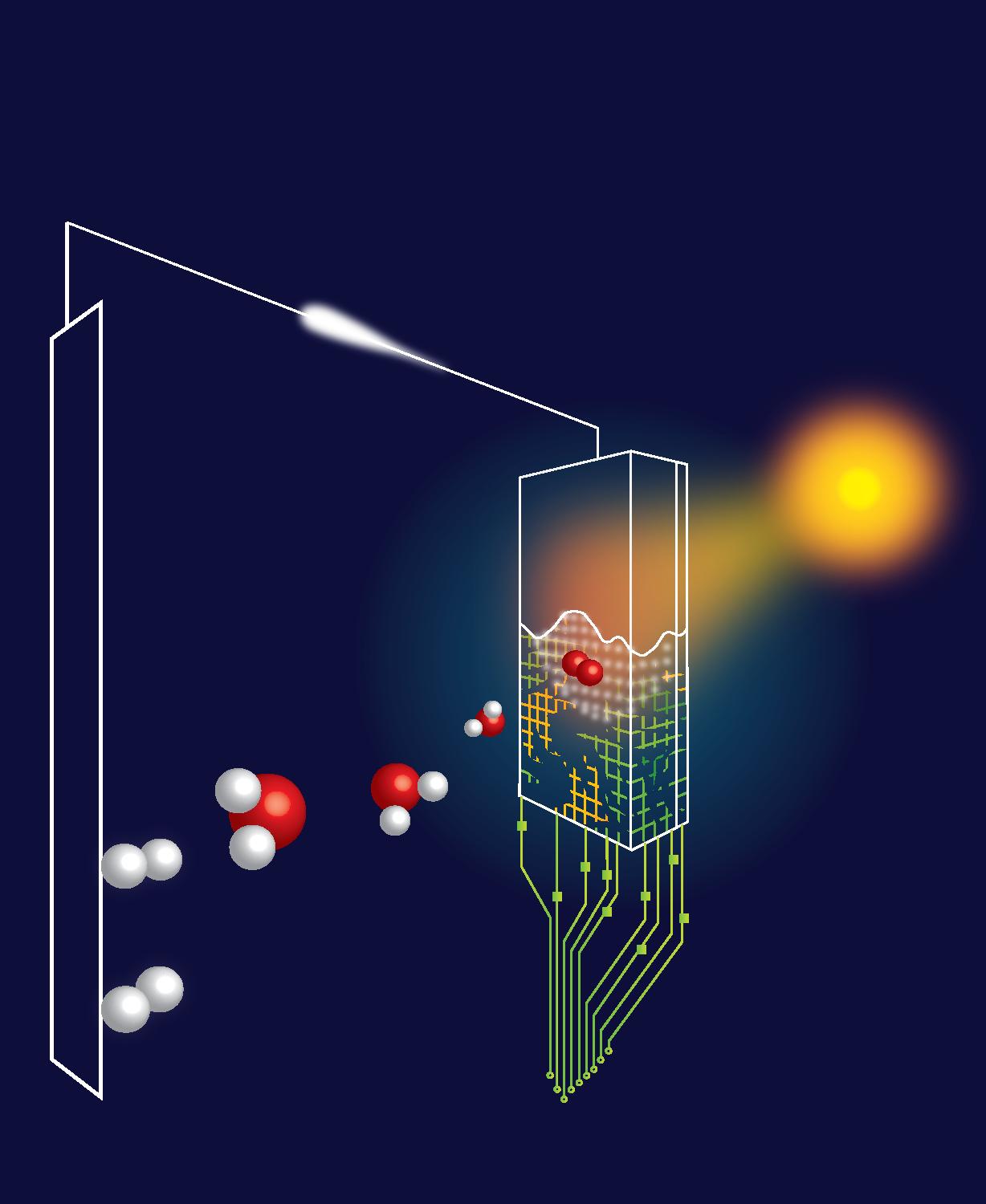Improving the efficiency of photoelectrochemical cells requires detailed understanding of all that is going on at the electrode surface. In an ACS Catalysis paper, the Bieberle group shows how a novel modeling approach not only explains what is happening, it can also guide selection of better performing materials.

Credit: Kiran George/DIFFER
When it comes to understanding catalysis, you need to focus on the interface where catalyst and electrolyte meet. That is where the magic happens. And that is where DIFFER researchers Kiran George and Anja Bieberle, together with colleagues, started to look for answers to a pressing problem: Why is the conversion efficiency of photoelectrochemical cells (PEC) nowhere near the theoretically estimated value?
Anja Bieberle, group leader Electrochemical Materials and Interfaces, sketches the bigger picture. "Clearly, we need sustainable solutions for our energy needs and that includes using solar energy. There are different ways to do that, such as photovoltaics in combination with electrolysis, where sunlight is used to generate electricity and further to produce fuels. Another option is to use photoelectrochemical cells. This solution is less mature, but has the major advantage of direct conversion of sunlight into hydrogen. There are, however, still important questions to address and several of these boil down to material issues. We don't yet know what the limiting mechanisms are. As a result, we don't know what the best material for the electrodes is."
Intermediate species
In a PEC, sunlight is used to split water into hydrogen and oxygen. Of these two half-reactions, the formation of oxygen at the photoanode is the performance-limiting reaction. "There is experimental evidence that surface effects are involved in the limiting mechanisms", says Kiran George, first author of the ACS Catalysis paper who just finished his PhD research with Bieberle. There are two types of surface effects that play a role; so-called recombining surface states (r-SS) and intermediate species surface states (i-SS). "The problem is that these effects, particularly the i-SS, are extremely difficult to measure experimentally", George explains. "These involve all the intermediate species that are formed in the conversion of water to oxygen. So, we set out to simulate what we can't measure."
George emphasizes that his modeling efforts are closely related to the experimental data. "We can measure the current as a function of the applied voltage and we simulate the same data. Comparing experiment and simulation, we can explain what is happening at the surface." In the simulations, the effects of the two surface states can be studied separately, which is an important step forward. George: "Only recently a distinction between r-SS and i-SS was made. With our models, experimentalists can now better understand what exactly is happening in their system."
Efficient selection
Next to gaining a deeper understanding of what happens in a PEC, Bieberle points to the possibility of a more rational choice for the material that should be used. "This work is a step toward a more detailed view of the process. It also helps to identify important characteristics of the materials. We did our work using hematite, Fe2O3, as the photoanode material. But there are so many possibilities when it comes to oxidized metals that right now, we are stuck when it comes to picking the best one. Our models could be used on complex materials and select suitable ones in a more efficient manner."
Realistic picture
According to Bieberle, their detailed examination of the surface effects is only one part of the innovative character of the work. "The model itself is novel in its approach. In our field, most of the modeling is 'atomistic', meaning small length and time scales. But we use a multiscale modeling approach combining atomistic with continuum modeling. Large length scales, large time scales. That gives a realistic picture of what is going on at the interface." And it's not just the electrolyte-photoanode surface they covered, George adds. "We included both sides of the interface, which means also the surface-bulk interface of the photoanode."
Next steps? Bieberle: "We plan to extend the modeling to other materials and we want to predict experimental data in the future – much faster and more cost efficient. We also want to design new experiments to actually measure the intermediate species." Whether that works out or not, the models will keep on developing, says George. "All new data will be used to improve the model. After all, a model is never finished."
More information
Paper: Understanding the Impact of Different Types of Surface States on Photoelectrochemical Water Oxidation: A Microkinetic Modeling Approach, Kiran George, Tigran Kachatrjan, Matthijs van Berkel, Vivek Sinha, Anja Bieberle-Hütter, ACS Catalysis (2020), doi:10.1021/acscatal.0c03987
DIFFER groups involved: Electrochemical Materials and Interfaced, Energy Systems & Control
Go to the News page.